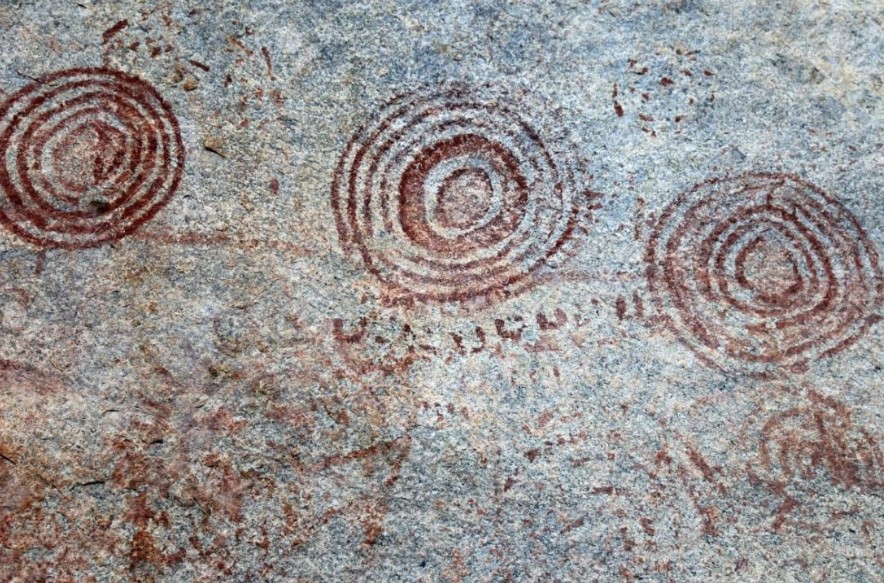Nyero Rock Paintings: A Glimpse into Uganda’s Ancient Artistic Legacy – Hidden amidst the lush landscapes of Uganda lies a captivating testament to the ancient artistic heritage of the region – the Nyero Rock Paintings. These remarkable prehistoric artworks, etched onto the surfaces of granite rock shelters, provide a captivating window into the lives, beliefs, and creative expressions of early human communities.
With their intricate designs and vibrant pigments, the Nyero Rock Paintings offer a rare opportunity to delve into the cultural tapestry of a bygone era, shedding light on the ingenuity and creativity that has always been an integral part of human existence.
Historical and Cultural Significance
The Nyero Rock Paintings are located in the Kumi District of eastern Uganda, near the foothills of Mount Elgon. Believed to have been created by the Twa, a now-extinct indigenous group that once inhabited the region, these paintings are estimated to date back to between 1,500 and 3,000 years ago. The rock shelters that house these paintings are nestled within a landscape rich in archaeological heritage, highlighting the historical significance of the area.
The paintings themselves depict a wide array of subjects, from animals and human figures to abstract symbols and geometric patterns. This diverse range of motifs provides valuable insights into the cosmological beliefs, social structures, and daily lives of the people who created them.
The Nyero Rock Paintings are not only exquisite examples of ancient artistry but also serve as crucial archaeological artifacts, offering researchers a glimpse into the past and a chance to unravel the mysteries of an ancient society.
Artistic Mastery and Techniques
One of the most striking aspects of the Nyero Rock Paintings is the remarkable level of artistic skill and attention to detail that they exhibit. The creators of these artworks utilized natural pigments sourced from the surrounding environment, such as red and white clay, as well as charcoal and plant extracts. These pigments were carefully mixed and applied to the rock surfaces, resulting in a stunning array of colors that have remained remarkably well-preserved over the centuries.
The use of pigments was not limited to their practical application; they also held symbolic significance within the cultural context. Red, for instance, often represented themes related to life, energy, and potency, while white was associated with purity and ancestral spirits. Through the interplay of color and form, the artists conveyed their beliefs and ideologies in a visually captivating manner.

Cultural Narratives and Interpretations
Interpreting the intricate narratives embedded within the Nyero Rock Paintings is a complex endeavor that requires a combination of archaeological research, anthropological insights, and an understanding of the cultural context. Some paintings depict scenes of hunting and dancing, shedding light on the activities that held social and ritualistic importance in the lives of the ancient inhabitants. Others feature enigmatic symbols and geometric patterns that may have held spiritual or cosmological significance.
One of the most famous panels at Nyero, referred to as “Nyero 3,” portrays a procession of human figures, animals, and abstract symbols. The composition suggests a sense of movement and rhythm, hinting at the possibility of a ceremonial dance or ritual performance. This panel, like many others, invites us to speculate about the stories and beliefs that these ancient artists sought to convey through their creations.
Preservation Efforts and Challenges
Preserving the Nyero Rock Paintings for future generations is a multifaceted challenge. The delicate nature of the rock shelters, combined with the effects of weathering and erosion, poses a constant threat to the longevity of these invaluable artworks. Efforts to safeguard the paintings include measures such as controlled visitor access, protective barriers, and ongoing monitoring to prevent vandalism and deterioration.
Furthermore, the surrounding landscape and local communities also play a vital role in the preservation of the Nyero Rock Paintings. Creating awareness about the cultural and historical significance of these artworks within the local population can foster a sense of pride and stewardship, encouraging responsible tourism and protective measures.
Inspiration and Reflection
The Nyero Rock Paintings continue to captivate and inspire individuals from around the world. Their intricate beauty, rich cultural narratives, and timeless messages serve as a bridge between the past and the present, offering a glimpse into the artistic achievements and aspirations of our ancient ancestors. These paintings remind us of the enduring human impulse to create, communicate, and leave a mark on the world, even across the vast expanse of time.
In conclusion, the Nyero Rock Paintings stand as a testament to the creative spirit of humanity and the deep connections that bind us to our past. Through their artistry, the ancient inhabitants of Uganda have left an indelible mark on the cultural landscape, inviting us to engage in a profound exploration of our shared heritage.
As we continue to uncover their stories and decode their meanings, the Nyero Rock Paintings remind us that the human journey is one of artistic expression, cultural evolution, and a timeless quest for understanding.


Comment (0)